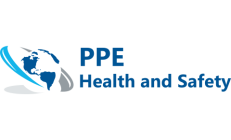
PPE supply supplies remain static as global demands surge. There’s a ubiquitous sense of uncertainty felt by nations as society acclimatizes to the novel COVID 19 world order. If supply chains don’t recover soon, what then? The relentless hunt for face masks, gowns, disinfectants, and sanitizers has since become a sport of sorts. In retrospect of this unpredictable circumstance, it’s paramount to get these personal protective supplies.
How useful are PPE face masks against COVID 19?
WHO illustrates how to wear face masks correctly and provides technical guidance on the purpose of use. Face masks have different designs that offer varying levels of protection and comfort. Health officials rank the N95 respirator as the best-performing face mask based on performance and protection efficiency. While it scores lower on the comfort scale, it safeguards the mouth and nose well. What’s more, health authorities only recommend this type of mask for those working in a clinical setting or similar environments.
Surgical masks (medical-grade) are next in line. These are disposable single-use face masks available in various styles. What these paper-like face masks do is cover the chin, mouth, and nose. It filters out large-particle droplets, spatters, and splashes of virus-causing germs. Also, it reduces the risks of respiratory and salivary contamination. Some of these masks feature specialized filtration barriers to enhance personal protection efficiency. As a means to slow COVID 19 transmission and control how the infection spreads, health authorities introduced the widely-used general-purpose face masks for public consumption in social settings.

Proven personal protection tips to slow COVID 19 spread
Handwashing – Health safety officials frequently reiterate the importance of following the recommended protocols to prevent infection. One way of doing this is to wash the hands properly with antibacterial soap or sterilize with an alcohol-based sanitizer. Although using alcohol-based hand sanitizer does eliminate some of the germs, it’s not 100 percent safe as a standalone precaution. For dirty hands, always use an antibacterial soap to remove virus-causing bacteria before using a sanitizer. Also, remember to wash the hands thoroughly for at least 20 seconds. As specified by health authorities, pay special attention to all fingers, especially the thumb, knuckles, and palms.
- Cleaning/disinfecting – High-touched surfaces remain a concern because coronavirus has varying life expectancy on different materials. According to research findings, it can survive on static surfaces for days. The surefire way to reduce contamination and infection is to sanitize these areas as the CDC dictates. It advises that individuals wear proper PPE, for example, gloves when cleaning and sterilizing these surfaces to reduce health safety risks. Also, it cautions the public to use disinfectant sprays and products according to the manufacturer’s explicit directions. Routine cleaning of surfaces with soap or detergent and water eliminates dirt, debris, virus-causing germs, and microbial organisms. Finishing with a germs-fighting disinfectant spray or solution neutralizes any lingering bacteria.
- Physical distancing – Another proven personal protection strategy is to maintain social distance when in public, which may lower the risk of infection. Maintaining a distance of one meter between individuals is adequate breathing room to keep saliva splatters and secretions at bay.
- Wearing face mask – When out in public, remember to wear face coverings, especially if sick. One critical responsibility of wearing face masks is to avoid touching it and follow correct hand hygiene techniques to prevent self-contamination. The nose, mouth, and eyes are the primary channels by which the virus enters the body. With this understanding, it’s imperative to avoid touching these body parts when wearing or removing face masks.
- Respiratory hygiene – Whether wearing a face mask or not, individuals must practice proper respiratory hygiene when sneezing or coughing in public. Be sure to sneeze or cough into the crease of the elbow to contain the burst of respiratory droplets or splashes. If using tissue, remember to follow proper disposal recommendations and wash the hands thoroughly.
Taking these precautions will substantially reduce the risks of coronavirus infections within communities. Amid the scarcity of personal protective equipment, finding top PPE suppliers and wholesalers isn’t impossible. Despite the options out there on the market, buyers should only source these products from a trusted PPE directory. In doing so, one can avoid scams and also find trustworthy traders who guarantee quality assurance. Online PPE directories generally screen members of their platform well to ensure legitimate, safe business dealings and protect their consumers.
